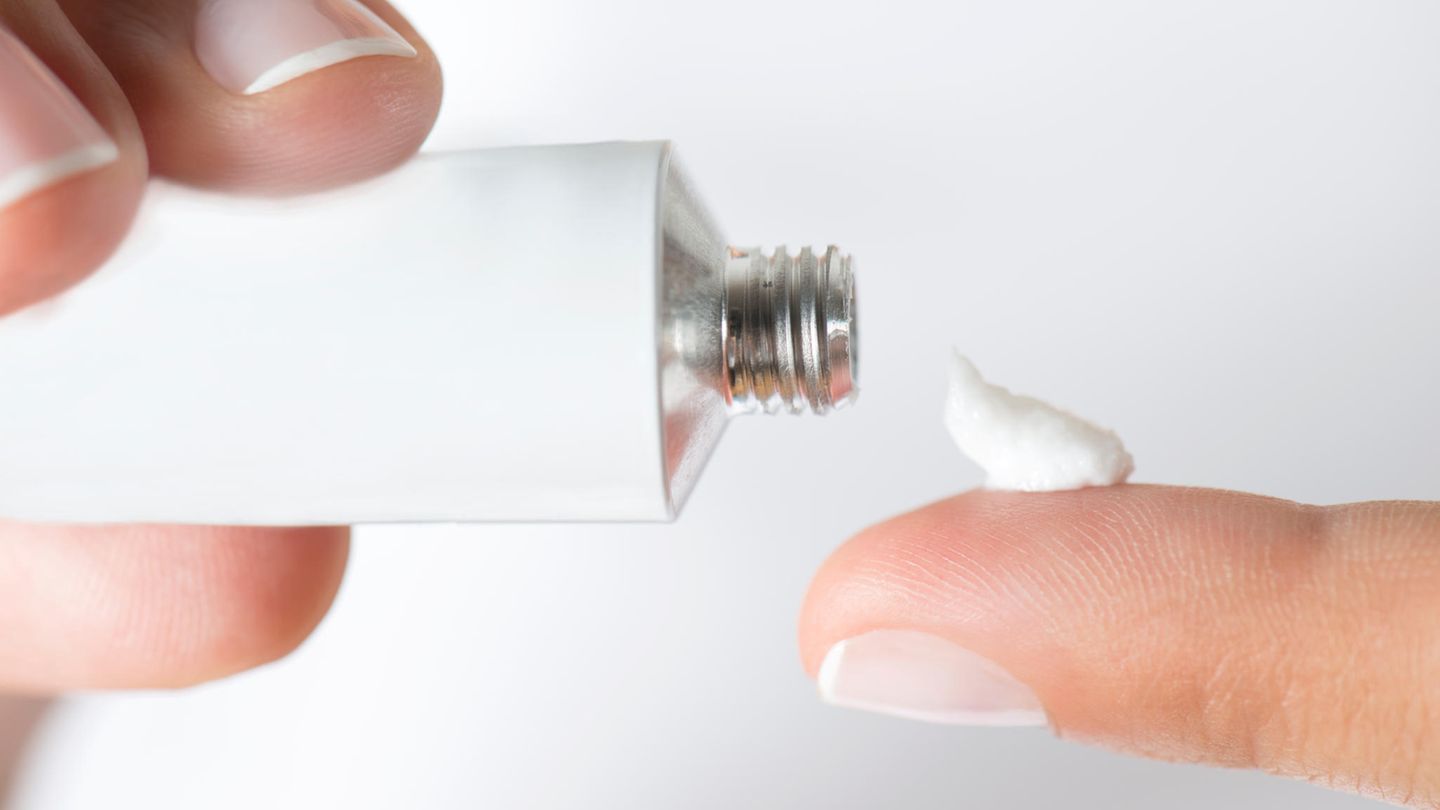Relieve pain
How to recognize nail bed ignition and treat it correctly
Copy the current link
Add to the memorial list
Nail bed infections can arise from damaged areas in the cuticle by penetrating germs into the nail bed and causing unpleasant inflammation.
The tissue under the finger or toened nails is referred to as a nail bed. If this is inflamed, there is talk of nail bed inflammation. Germs such as bacteria or mushrooms can trigger the unpleasant skin reaction by penetrating the skin via small wounds. Often not only the nail bed is affected for nail bed inflammation, but also the surrounding nail section with nail fold, nail wall and cuticle. Find out here how to recognize nail bed inflammation and treat you correctly.
Causes of nail bed inflammation
Usually injuries to the cuticle arise from the wrong nail care, dry, cracked hands or feet and cuts. But also frequent contact with water or aggressive chemicals can cause painful inflammation of the nail bed. Sometimes the smallest punctures, for example through a splinter, are sufficient to pave the way. Ingrown nails, nail chewing or bruises also damage the fine skin around the nails. Nail bed infections on the feet are often due to pressure points on the toes. You should therefore avoid too tight footwear. The typical pathogens of inflammation include bacteria such as staphylococci and streptococci as well as yeast mushrooms and herpes viruses.
How to recognize nail bed inflammation
When the nail bed is acutely inflamed, the diseased tissue reduces, swells and causes pain. The affected skin areas also feel hot and are noticeable by a tapping pain, which is triggered by the pulse of the small blood vessels. If it is an infection with bacteria, even pus forms on the side edges and under the nail plate. This can react to pressure and may escape laterally at the inflamed area. Possible side effects can also be fever and swollen lymph nodes.
Which ointment helps with nail bed inflammation?
You get various remedies in the pharmacy or online. Disinfectant solutions or ointments containing iodine or other antibacterial substances can help quickly, especially if bacteria are the cause of the infection.
Vegetable tensile ointment
Tension ointments are very suitable for the treatment of the inflamed finger or toenail nail. Such ointment pulls the inflammation to the skin surface, so that the abscess matures faster. That sounds paradoxical at first glance, but this is how the skin becomes softer, the painful pressure takes off and the pus can drain out naturally. The tensile ointment helps against skin inflammation up to smaller abscesses and, thanks to the vegetable active ingredients, should be particularly gently to the skin.
Ointment with iodine
The tensile ointment Contains the active ingredient iodine, which is suitable for germ reduction, disinfection and support of the wound healing of nail bed inflammation. Iodine is also effective against a variety of pathogens such as bacteria, viruses and fungi.
Which home remedy helps with nail bed inflammation?
Appearance nail bed inflammation can be reduced by soothing foot baths. In anti -inflammatory herbal additives such as chamomile can calm the skin and let the inflammation subside. Bathing your sick finger or toes twice a day for about 20 minutes in one .
Can nail bed inflammation be dangerous?
Easy measures such as baths, disinfectant solutions and ointments often help with the beginning of inflammation. If you have nail bed inflammation for the first time, you can also get advice in the pharmacy.
If the inflammation does not go back after the first treatment, the reddening spreads, swelling or overheating occurs, the pain becomes stronger or when we can add ooid or purulent areas, then you should see a doctor. The contact person can first be the family doctor who will discuss further steps with you.
Longer persistent, non -sufficient or not sufficiently treated nail bed infections can lead to the nail deformed or dropped out. In the worst case, the surrounding tissue, tendons and tendon sheaths and finally bones could be recorded and painful bone inflammation would develop. Do not try to open a pusherd for yourself, otherwise bacteria could be dragged into deeper tissue layers.
Present the right nail care
Unpleasant nail bed infections can be prevented if you pay attention to the following things when caring for nail care.
- You should cut finger and toenails regularly so that you cannot grow into or break.
- Fingernails must be rounded round. Make sure not to cut too deep into the side wall. On the other hand, they cut toenails straight and file ahead so that there are no sharp edges that promote injuries.
- You must not cut the cuticles with scissors. It is better if you gently push it back with a rounded, smooth slide, provided the skin is not dry and cracked.
- A foot or hand bath, nourishing creams and oils maintain the skin and nail and can make it easier to maintain the subsequent care.
- By the way, during nail bed inflammation, you should not push the cuticles back to protect the skin and avoid further injuries.
Note: This article contains general information and cannot replace a doctor’s visit.
*This article contains so-called affiliate links to products in online shops. If a user clicks on it and buys something, the publisher receives a commission from the dealer, not from the manufacturer. Of course, where and when you buy a product is up to you.
HL
Source: Stern
I’m Caroline, a journalist and author for 24 Hours Worlds. I specialize in health-related news and stories, bringing real-world impact to readers across the globe. With my experience in journalism and writing in both print and online formats, I strive to provide reliable information that resonates with audiences from all walks of life.




